Introduction: The Need for Flexibility in Indian Homes
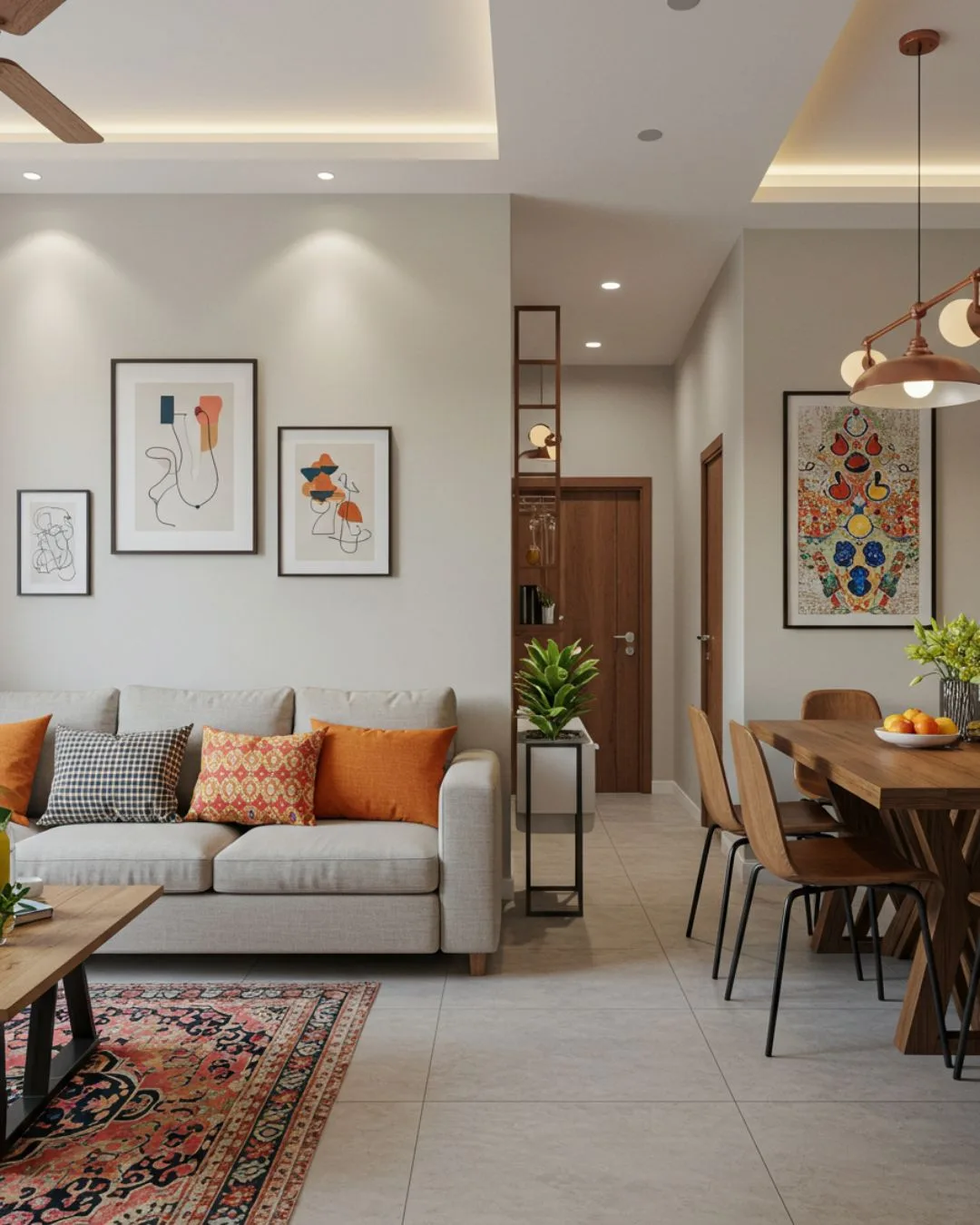
Space, especially in urban India, is often at a premium. The trend of shrinking apartment sizes and the changing dynamics of Indian families are making multifunctional spaces not just a desirable feature but a necessity in Indian homes. 2025 interior design will likely see a significant increase in this. It’s about maximizing every square inch and creating homes that are adaptable, functional, and beautiful.
The rise of nuclear families, the increasing prevalence of work-from-home arrangements, and even the needs of multi-generational households all contribute to the need for greater flexibility in home design. A room that serves solely as a formal dining room, for example, might be underutilized in a modern Indian home. Instead, that space might need to function as a dining area, a home office, and a study space for children at different times of the day.
Multifunctional spaces are the solution. They allow you to get the most out of your limited square footage, creating homes that are:
- More Functional: Each space serves multiple purposes, increasing its utility.
- Better Organized: Clever storage solutions and adaptable layouts help minimize clutter.
- More Flexible: The home can adapt to changing needs and activities.
- More Adaptable: Suitable for a variety of lifestyles and family structures.
Key Strategies for Creating Multifunctional Spaces in Indian Homes
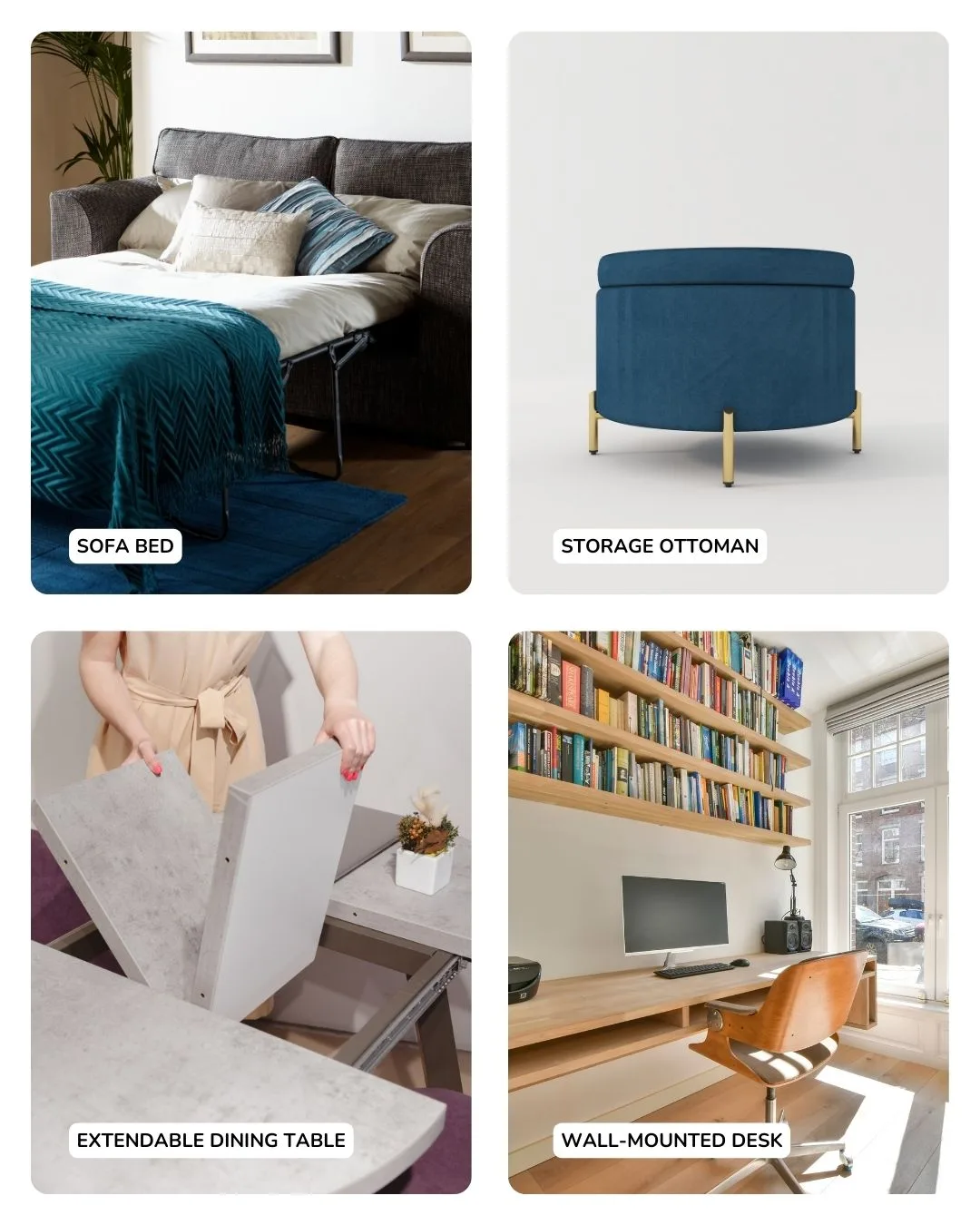
Let’s explore the key strategies for creating spaces that can seamlessly transition between different functions:
1. Smart Furniture Choices: Space-Saving and Versatile
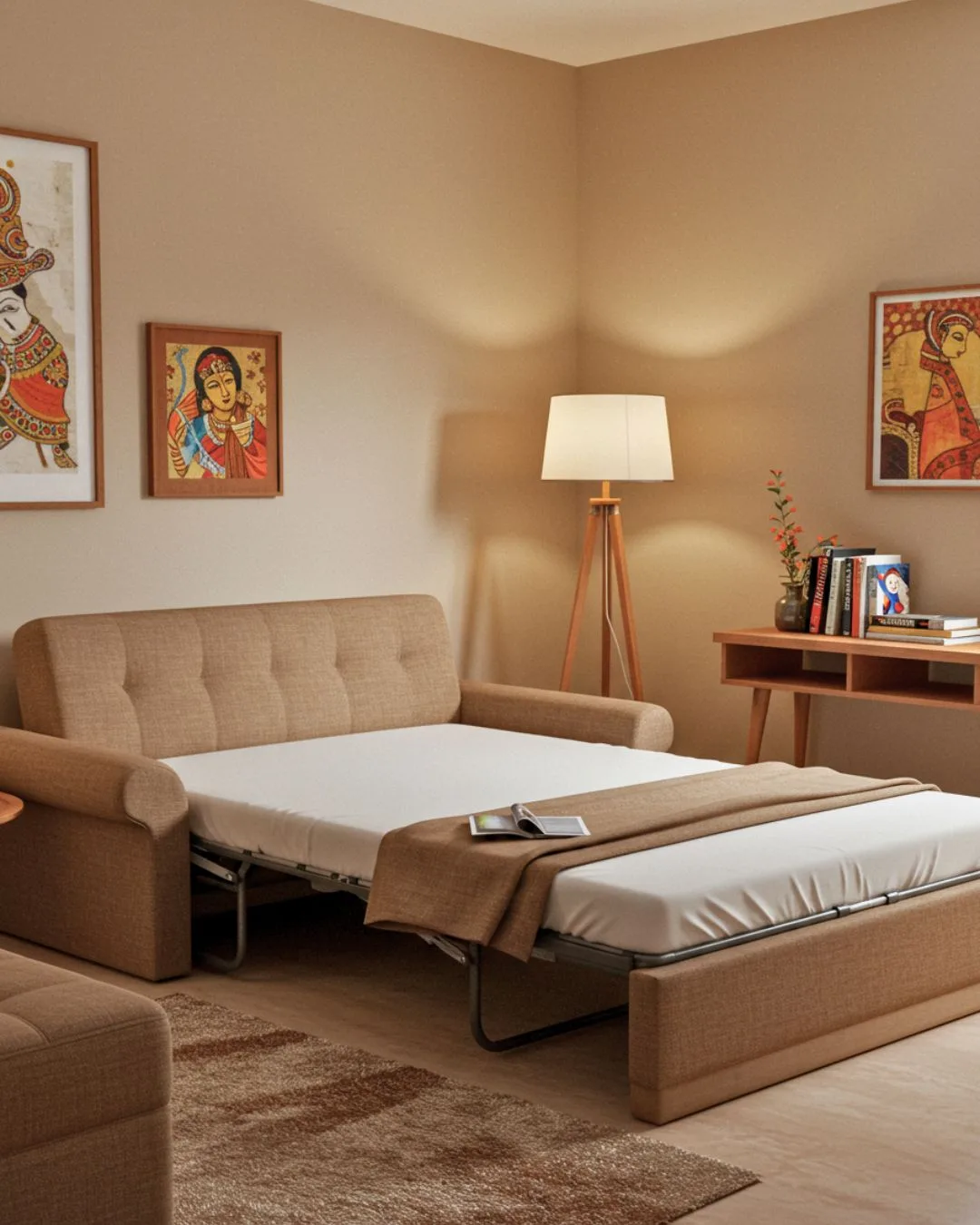
Space-saving furniture India designers are creating is essential for multifunctional spaces. Look for pieces that serve multiple purposes:
- Sofa Beds or Futons: Provide seating during the day and convert into a bed for guests.
- Storage Ottomans: Offer seating, footrests, and hidden storage.
- Extendable Dining Tables: Adapt to different group sizes, from intimate family meals to larger gatherings.
- Wall-Mounted Desks or Folding Desks: Create a workspace that can be tucked away when not in use.
- Beds with Built-in Storage Drawers: Maximize storage space in the bedroom.
- Nesting Tables: Provide flexible surface space that can be easily expanded or reduced.
- Multi-functional Wardrobes: Wardrobes designed with multi usage.
Choose furniture that is not only functional but also aesthetically pleasing, complementing your overall Indian interior design style.
2. Adaptable Layouts: Creating Zones within a Room

You can create distinct zones within a single room using clever layout techniques:
- Furniture Placement: Use sofas, chairs, or bookshelves to define different areas.
- Rugs: Define different zones visually, such as a seating area or a dining area.
- Screens or Room Dividers: Provide visual separation and privacy when needed.
- Changes in Flooring: Use different flooring materials to delineate different zones (e.g., a rug in the living area and tile in the dining area).
Examples of zones you might create:
- Living and Dining: Combine a seating area with a dining table and chairs.
- Sleeping and Working: Create a dedicated workspace within a bedroom.
- Living and Working: Designate a corner of the living room as a home office.
- Playing and Studying (for children’s rooms): Separate areas for play and homework.
Maintain good flow and avoid a cluttered feel by ensuring there’s enough space to move around comfortably between zones.
3. Clever Storage Solutions: Maximizing Space and Minimizing Clutter
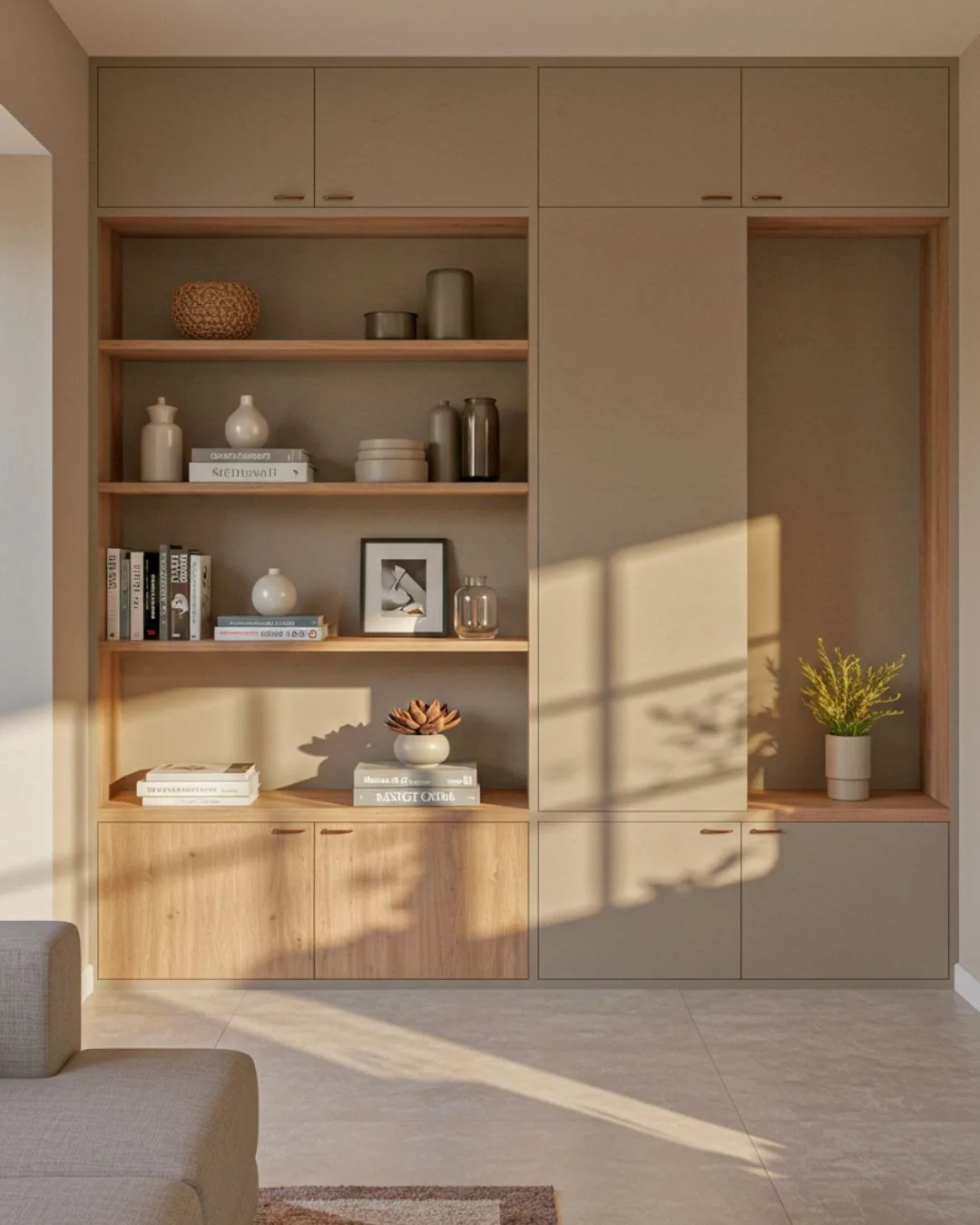
Effective storage is crucial for small space design India homes often struggle with. Maximize space and minimize clutter with:
- Wall-Mounted Shelves and Cabinets: Utilize vertical space for storage.
- Built-in Storage Units: Customize storage to fit your specific needs and maximize every inch of space.
- Under-Bed Storage: Utilize the space under beds for storing seasonal items or extra bedding.
- Vertical Storage Solutions: Use tall, narrow shelving units or organizers to take advantage of vertical space.
- Utilizing Corners and Awkward Spaces: Find creative ways to use corners and other often-overlooked areas for storage.
Decluttering is an essential first step. Regularly assess your belongings and get rid of anything you don’t need or use.
Using Room Dividers
Room dividers helps to divide space temporarily or permanantly. You can use curtains, book shelves, folding doors etc..
4. Lighting for Multifunctional Spaces
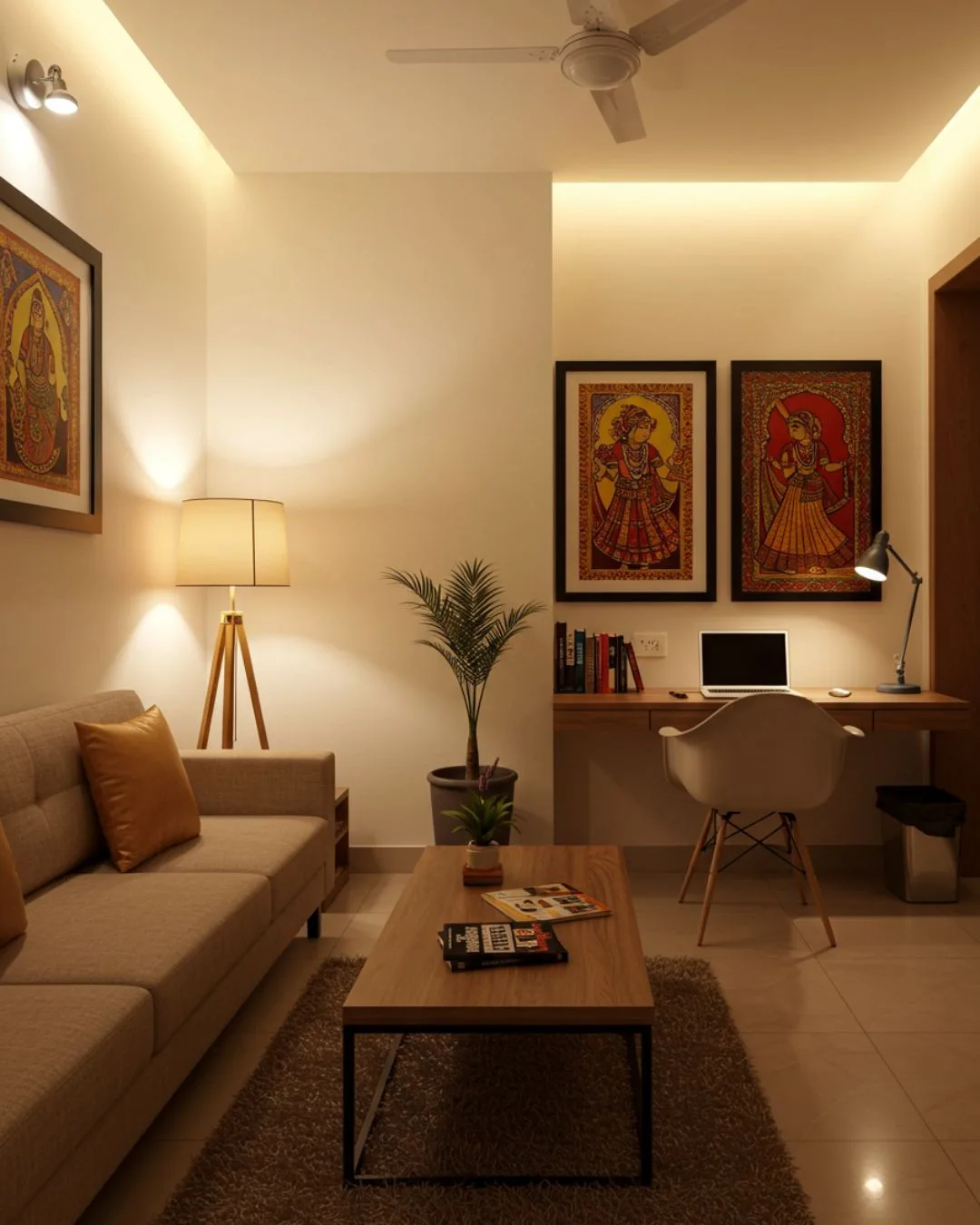
Lighting plays a crucial role in defining different zones and creating the right ambiance for different activities:
- Ambient Lighting: Provides overall illumination for the room.
- Task Lighting: Focused light for specific activities like reading, working, or cooking.
- Accent Lighting: Highlights artwork, architectural features, or decorative objects.
Use dimmers to adjust the brightness and create different moods for different activities.
5. Color and Texture: Creating Visual Separation
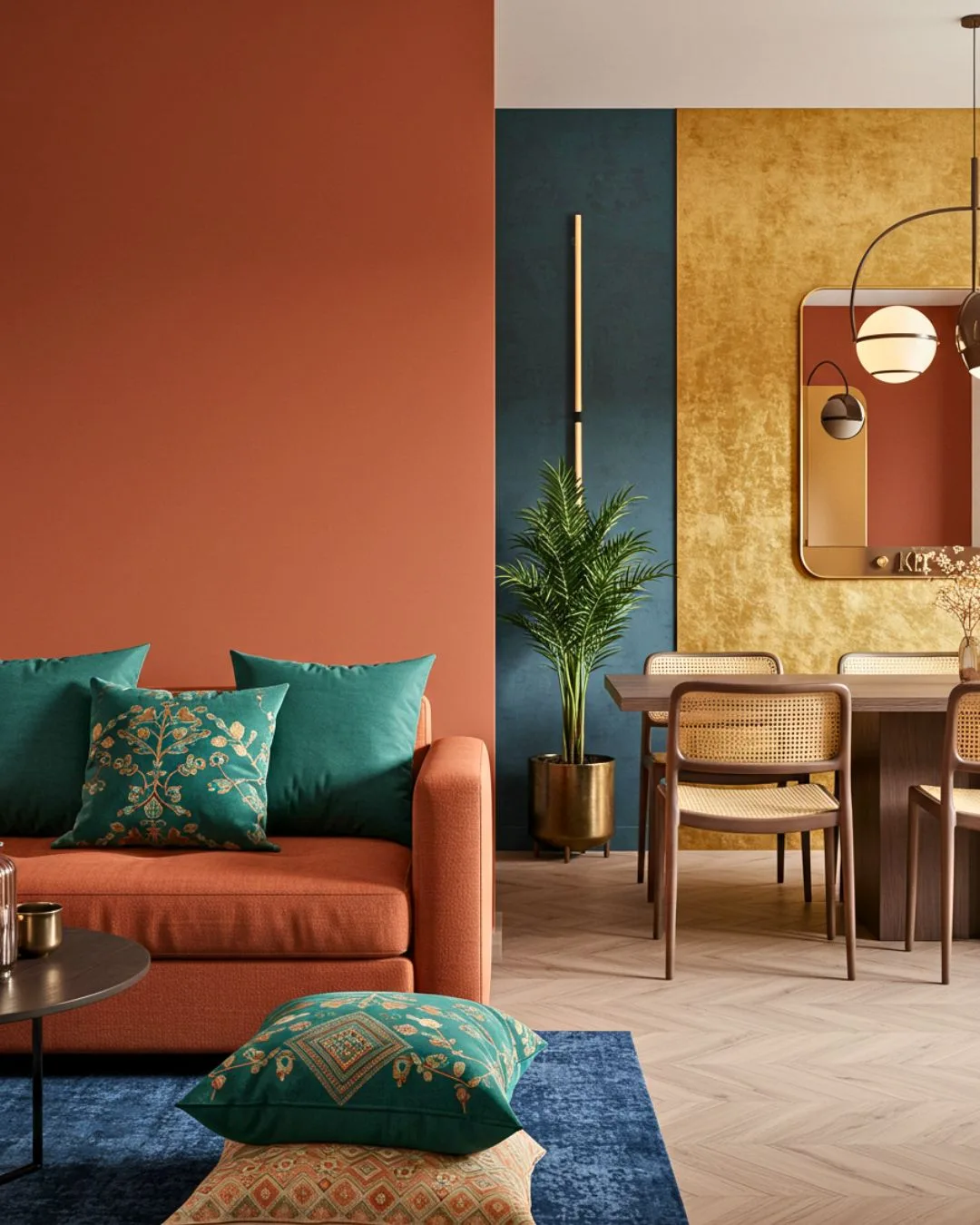
While maintaining a cohesive color palette, you can use subtle variations in color and texture to define different zones:
- Use a slightly different shade of paint for one zone.
- Introduce different textures through rugs, wall hangings, or upholstery.
- Use patterns to differentiate areas.
Applying Multifunctional Design to Specific Rooms in Indian Homes
- Living Rooms: These often become the central hub, combining living, dining, and sometimes even a workspace. Clever furniture choices and zoning are key.
- Bedrooms: Beyond sleep, bedrooms may need to accommodate a workspace, a dressing area, or even a small seating area.
- Kitchens: Optimize the space for cooking.
- Balconies: It can be an extension of the living room.
- Guest Rooms: If you have a guest room that’s infrequently used, consider making it multifunctional – perhaps a home office or a hobby room that can be easily converted into a guest room when needed.
Conclusion: Embracing Flexibility for a More Adaptable Home
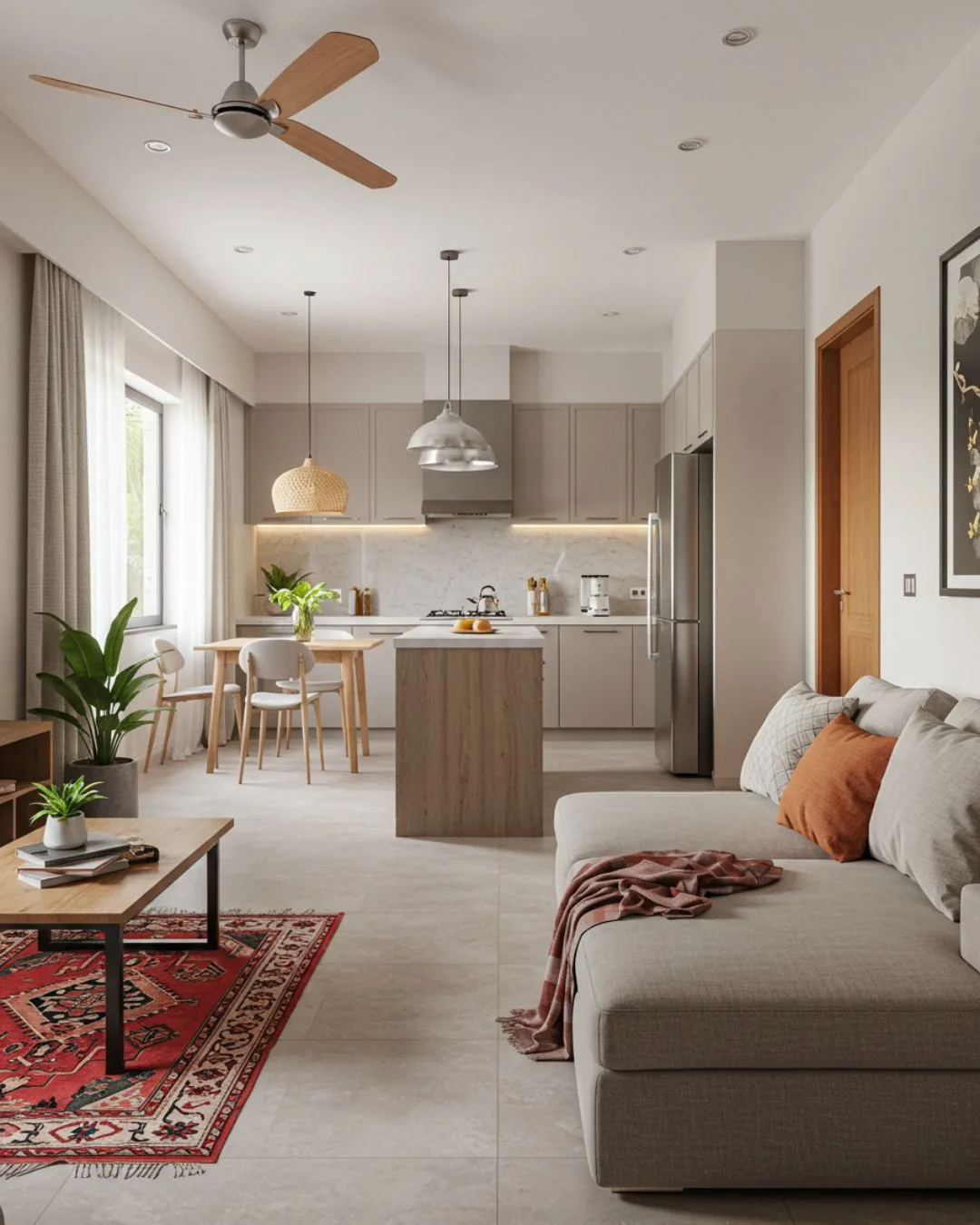
Multifunctional spaces are no longer a luxury; they’re a necessity for many Indian homes, particularly in urban areas. By embracing flexibility, smart design solutions, and creative furniture choices, you can create a home that adapts to your changing needs and maximizes every square inch. It’s about creating spaces that are not only beautiful but also incredibly functional and adaptable, reflecting the dynamic lifestyles of modern Indian families. Visit Sthala.design for more Indian home design inspiration and explore the possibilities of multifunctional furniture and adaptable home design.
Curious about the other major trends transforming Indian homes in 2025? This article explores one key aspect, but for a complete look at the future of Indian Interior Design, be sure to check out our main guide: [Indian Interior Design Trends 2025 – The Ultimate Guide]







